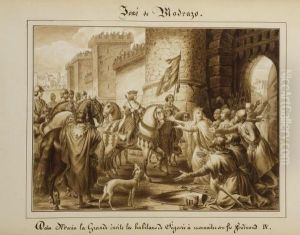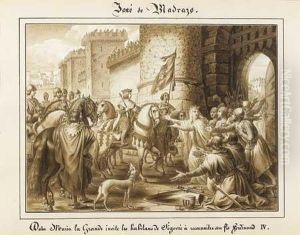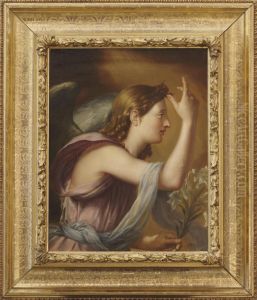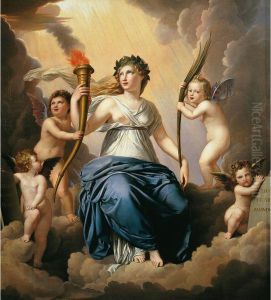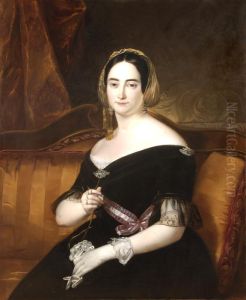Jose Madrazo Y Agudo Paintings
José de Madrazo y Agudo was a prominent Spanish painter of the neoclassical period. Born on April 22, 1781, in Santander, he became one of the most influential artists and art administrators of his time in Spain. His initial artistic training was under the tutelage of Gregorio Ferro, a disciple of Mengs, and later he moved to Madrid to continue his studies.
Madrazo's talent and ambition soon led him to further his education abroad. With the support of King Charles IV, he traveled to Paris in 1801 to study under Jacques-Louis David, the foremost neoclassical painter of the era. This experience had a profound impact on Madrazo's style and artistic direction. After spending time in Paris, he moved to Rome in 1803 where he became part of a circle of Spanish artists and was influenced by classical art and the Renaissance masters.
In Rome, Madrazo produced some of his most notable works, including 'The Death of Viriato, Chief of the Lusitanians' which is considered one of his masterpieces. His time in Italy was also significant as he met his wife, Isabel Kuntz Valentini, the daughter of a Polish painter residing in Rome.
Upon his return to Spain in 1819, Madrazo was appointed as a court painter and later became the director of the Museo del Prado in Madrid, a position he held from 1838 to 1850. He played a crucial role in the reorganization and cataloging of the Spanish royal collections and contributed to the development of the Prado as one of the premier art museums in Europe.
Madrazo's influence extended beyond his own works through his role as an educator. He was a founding member of the Royal Academy of Fine Arts of San Fernando and trained a new generation of Spanish artists, including his sons Federico de Madrazo, a notable portraitist, and Luis de Madrazo, also a painter.
José de Madrazo y Agudo passed away on May 8, 1859, in Madrid. His legacy is marked by his contributions to the promotion of neoclassicism in Spain, his efforts in the fields of art conservation and museum curation, and his role in mentoring future artists who would shape the course of Spanish art history.
